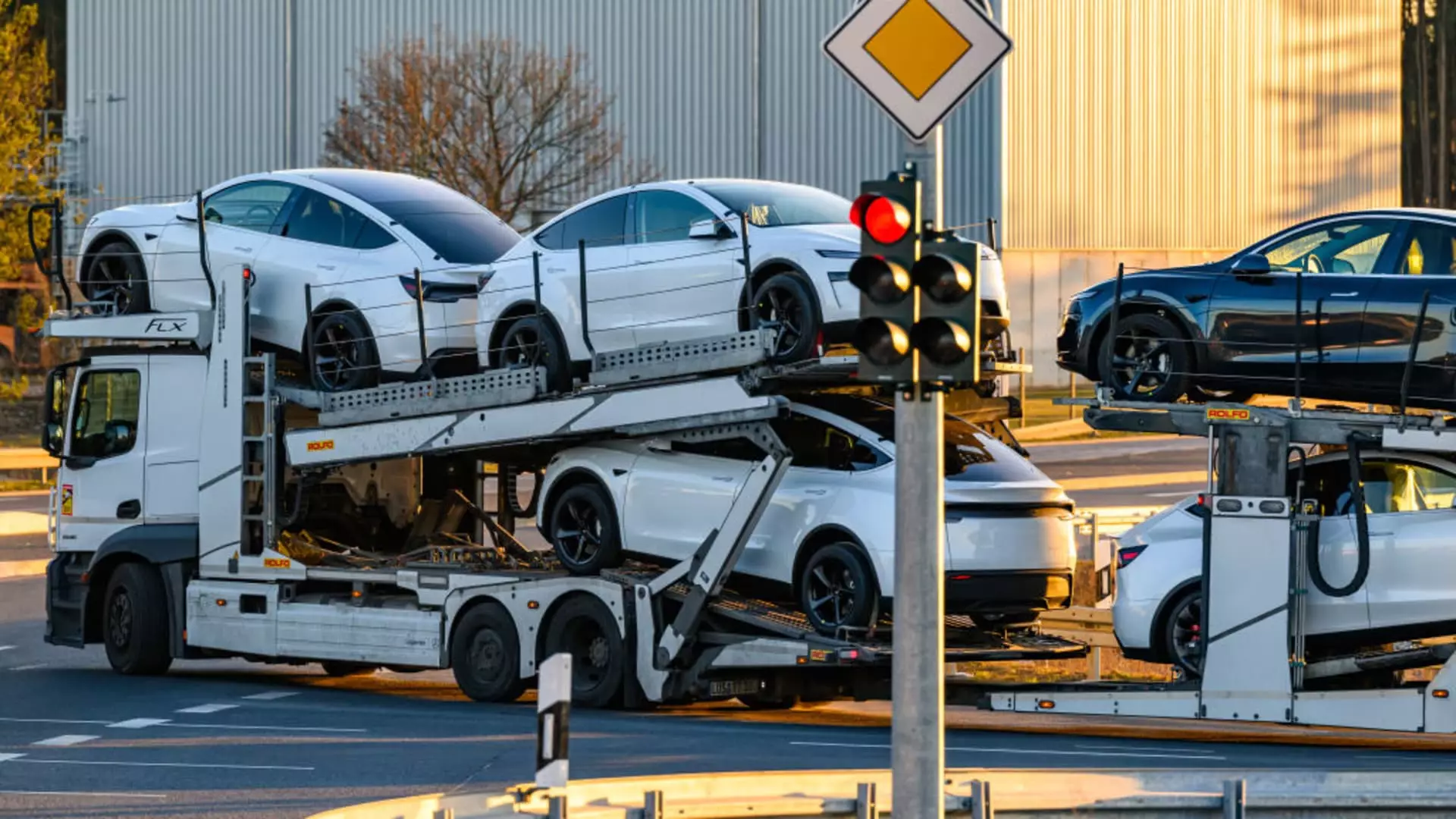Tesla’s first quarter of 2025 has proven to be a stark wake-up call for a company that once basked in the glow of unwavering investor confidence and soaring sales figures. With only 336,681 vehicle deliveries, this reflects a substantial 13% year-on-year decline, marking the worst quarter for Tesla’s stock since 2022, a time many investors might prefer to forget. For a company that has long dominated the electric vehicle (EV) landscape, these figures represent not just a fleeting dip but potentially a seismic shift in the market’s perception of its capabilities and future prospects.
The stock market reacts sharply to news such as this, with shares initially falling in response to Baker Hughes’ predictions and the revelation that CEO Elon Musk’s focus may be shifting elsewhere. This has raised eyebrows and created speculation. A decline of nearly 36% in stock value throughout the previous quarter has compelled investors to question whether Tesla is still the shining beacon of innovation, or merely a once-great titan in decline. It appears the company’s invulnerable image is beginning to chip away, revealing vulnerabilities that many had hoped would remain obscured.
Lost Expectations
The gap between investor expectations and actual performance could not be more pronounced. Analysts had anticipated deliveries to fall between 360,000 and 370,000 vehicles, with the consensus aiming even higher at about 377,590. Instead, the disappointing result begs the question: Can Tesla continue to justify its elevated valuation in the face of declining sales? For a company that has often lectured the automotive industry on the importance of disruption, falling short on delivery is nothing short of a calamity.
CEO Elon Musk has continually touted the upcoming Model Y as the “best-selling car on Earth,” a claim that now seems increasingly far-fetched given current sales trends. The company produced just 345,454 units of the Model 3 and Model Y in the first quarter, an alarming figure that indicates not just a slowdown in demand, but potentially a perceived loss of desirability among consumers. If the flagship models struggle in a saturated market filled with competent competitors, Tesla’s aspirations of grandeur may be in jeopardy.
External Pressures and Internal Turmoil
Much of this turmoil comes against a backdrop of significant external pressures. The ongoing political controversies surrounding Musk have influenced public perception, culminating in protests and boycotts targeting the company itself. As Chief Executive, Musk’s decision to engage politically and financially in previous administrations, including support for Donald Trump, has drawn ire from segments of the public, clouding Tesla’s brand image. In addition, the rise of competitors like BYD in the EV market is reshaping the landscape in real-time, as potentially superior products become more available.
Internationally, Tesla’s reputation isn’t faring much better. In Europe, market share has plummeted, crashing from 17.9% to a mere 9.3% within a year. The decline in Germany was notably severe, with the company’s share of battery electric vehicle (BEV) sales dropping from 16% to just 4%. As rival automakers ramp up their own electric offerings, Tesla finds itself in a dogfight that will require more than just innovative engineering; it needs to reclaim consumer trust and interest.
Questioning the Future
Furthermore, a curious turn of events occurred in Canada where challenges to the validity of reported sales have raised more questions than answers. While the company claimed significant sales in a specific weekend, these figures now appear shrouded in mystery as payments intended to subsidize EV transitions face freezes and investigations. Such scrutiny doesn’t just threaten quarterly performance; it reflects a deeper scrutiny of corporate behaviors that could further embolden competitors to capitalize on Tesla’s ongoing struggles.
The narrative surrounding Tesla has shifted dramatically from one of boundless optimism to cautious skepticism. The quarterly numbers serve as more than just data points; they symbolize shifting tides in consumer sentiment and investor confidence. What was once a beacon of progress may find itself at a crossroads, forced to recalibrate and strategize smarter, rather than merely leaning on past innovations to carry its weight. As external challenges mount and competition grows stiffer, the resilience of Tesla’s brand will be tested like never before.
The Broader Implications
Tesla’s fate is not merely a matter of falling sales but a reflection of how societal perceptions can shift. With evolving consumer preferences and a more engaged electorate questioning corporate responsibility, companies in the EV market, including Tesla, must navigate a complex web of challenges that extend beyond the boardroom into the societal realm. The company is at a critical juncture, one that might dictate its relevance in a decade where sustainability is the name of the game, and brands are evaluated not only on their products but also on their ethical behaviors and political affiliations.
As we move forward, only time will reveal whether Tesla can adapt and thrive in this reconstructed landscape, maintaining its position at the forefront of electric vehicle innovation or succumbing to the very forces it once thought it could harness.

